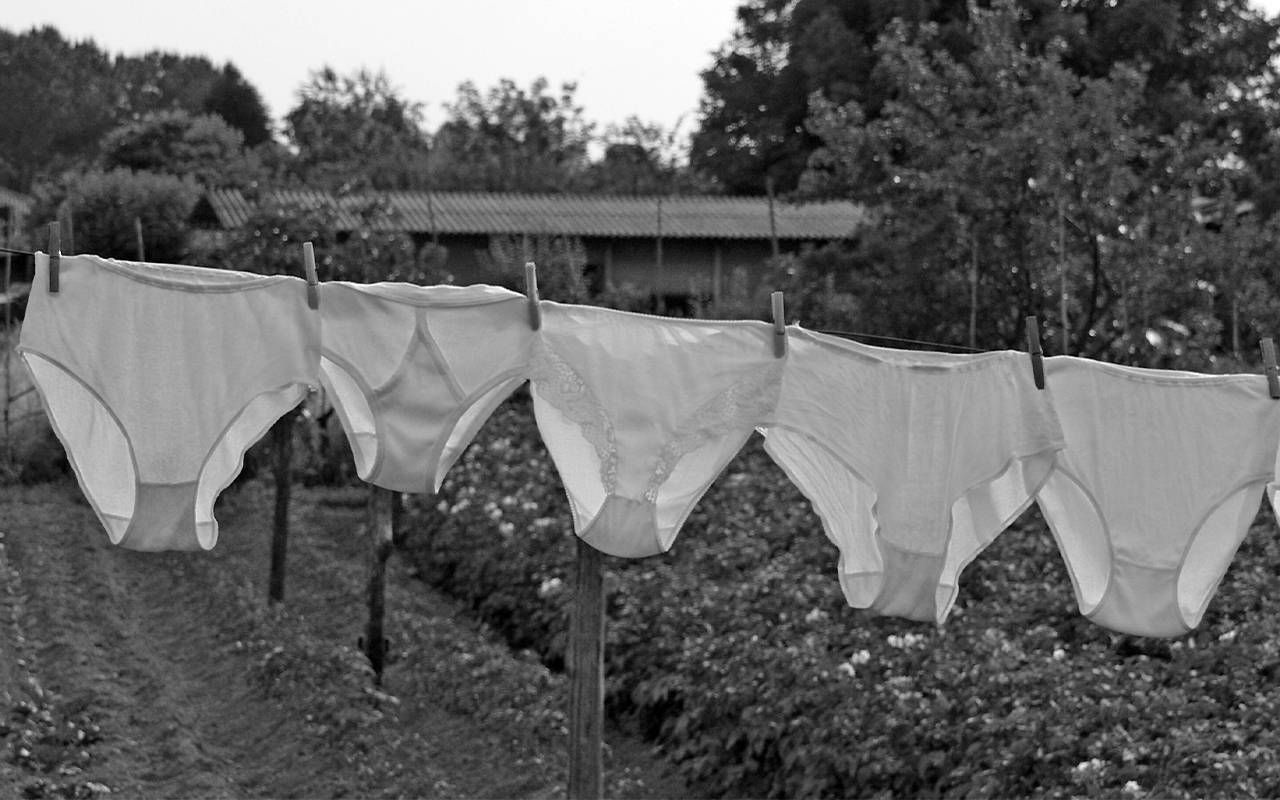Technology Offers Eco-friendly Options for Menstruating Individuals
Technology has developed washable underwear for both periods and incontinence, a far cry from the past
In 1927, the Johnson and Johnson Company announced Modess, a sanitary napkin for menstruating women. The product was a vast improvement over old methods. Prior to that, women used flannel or cotton cloths and rewashed them secretly, apart from the family's other laundry. Some women used rags and then buried them.

In some cultures, women waited out their period in a stand-alone hut (I would have accepted the hut option in my day, had it been in Tahiti, with a beach view and a mini-bar). Modess had early challenges, and none of Johnson and Johnson's advertisers would promote the shameful product.
The new technology requires a serious look, if not for the environmental impact alone.
Johnson and Johnson devised an interesting strategy called the "silent purchase option," a coupon mailed to women nationwide. Customers handed the coupon to a store clerk, who retrieved the item without a word.
But there's good news for all women, from the 12-year-old beginning the period journey to the peri- or post-menopausal woman who leaks when she laughs. Technology has developed washable underwear for both periods and incontinence, a far cry from the past.
The new technology requires a serious look, if not for the environmental impact alone. Period and incontinence pads, according to the International Journal of Obstetrics and Gynecology, take 500 years to break down in a landfill. That's for one pad.
Period and incontinence pads take 500 years to break down in a landfill. That's for one pad.
Can this be made more horrifying? The Journal reports that the disposable pad has the highest environmental effect "because of the amount of mineral/fossil fuel depletion caused by its production, its estimated carbon footprint, and the amount of wet and dry waste it produces. Single-use tampons, especially those with plastic applicators, contribute to plastic waste."
Seven billion tampons and pads end up in landfills yearly, a staggering number that doesn't need to be that large.
'Becoming a Woman'
In 1967, when I was ten, I knew nothing of menstruation or what would happen to me. "Today, the boys get an extra 30-minute recess," said Mrs. Thompson, my fourth-grade teacher. Woosh! Fifteen boys in striped shirts and Husky jeans zoomed out of the hall and to the playground.
"Now for you girls," our teacher said, "We have a special film and presentation from our county nurse." The nurse turned on the projector, and the film narrator droned on about all the activities we girls could do.
My mom gave me something that looked like a garter belt but with clips to hold the dreaded sanitary napkin in place.
The screen was filled with pictures of roller-skating in a park, playing volleyball, and running on a track. I didn't get it because I was terrible at roller skating, couldn't play volleyball and was the slowest runner in my class. The school's annual Track Day was my nightmare. What could improve all that?
The film's narrator began to tell us that our bodies were changing and that we would soon experience "becoming a woman." We saw charts with fallopian tubes and various anatomical illustrations. She had our attention.
The nurse talked to us and answered some questions. She gave us a pamphlet to take home and discuss with our mothers. Oh, the hyperbole!
Not long after that, my mom gave me something that looked like a garter belt but with clips to hold the dreaded sanitary napkin in place.
No mention of tampons, ever. Then I put the stuff away because I wouldn't need it until the summer before seventh grade. When my transformation finally happened, I found the whole process troublesome and messy. I discovered tampons through my friends but often added a pad if my flow was heavy. I struggled with odd cycles and heavy bleeding in my thirties and forties.
In 2005, my gynecologist recommended a hysterectomy for recurring problems. What a joyful day. I sometimes celebrate it as my second birthday.
But womanhood wasn't through with me. I had given birth to a son whose newborn head was approximately the size of a basketball. After a lifetime of coughing from asthma, and in my late fifties, I began noticing some dampness after I coughed. So I was back to the pads.
Period and incontinence underwear share features, though brands may use different methods and fabrics. As pads come in different sizes, the panties come in different absorbencies.
Innovative Products
Dr. Karmon James of the Cleveland Clinic described the amount that period underwear can hold, saying, "Period underwear typically holds somewhere between one and two tampons worth of flow."
James noted that period underwear is safe if washed properly on a gentle or delicate cycle. No other laundry should be in that cycle. And fabric softeners or fabric sheets should not be used.
The Cleveland Clinic recommends that women not wear a pair for more than 12 hours and may need to adjust for less time depending on their flow. Because many brands are available, James recommended buying and testing several kinds on a light flow day. Each brand may contain different materials, including cotton, nylon, merino wool and polyester.
Some brands use microbiological technology to combat odor or reduce bacterial growth. According to Mayo Clinic, about 50% of women will experience some urinary incontinence in their lifetime. Don't expect it to be at the top of your gal pal book club discussion list, as it's even taboo between patients and physicians.
For women with minor problems, the new incontinence underwear may offer a great solution.
Mayo Clinic reported that only 25% to 61% of women who experience episodes would talk to their doctor. Women who are concerned should check with a physician, as there are procedures and medications to address the problem.
Some women may receive improvement from pelvic floor therapy. Others may benefit from devices, such as pessary or incontinence tampons. Some women with serious problems may need surgery to add a mid-urethral sling. Again, always check with your medical provider.
For women with minor problems, the new incontinence underwear may offer a great solution. My social media feed is filled with these products, and there are many to choose from. The same advice given for period underwear applies here. Order one pair of several different kinds and see which works best for you.
I ordered two brands. Despite the literature stating that these products could be washed in the washer, one required handwashing. Both pairs fit well. There was also a huge price difference. The most well-known brand costs three times as much per pair as the other, at forty dollars a pair (the price drops if you buy multiple pairs).
Yet, the more expensive brand, consistent in price with most others, could be washed in a washer (by itself or with other undies of the same kind.) You cannot wash these products with your regular laundry. As a rule, I don't put my delicates in the dryer and hang them on a rack.
Both pairs did the job. I don't usually need them unless I'm having a coughing fit from my asthma. I don't wear pads at home because I'm close to the bathroom. I felt comfortable in both brands, but I would add a pad if I were headed somewhere with an unknown bathroom situation. I'm not sure any product can fix my anxiety over that.
The National Association for Continence believes these products best suit women with light-to-medium leaks. One aspect I liked, and I suspect this is true of the period underwear, is that they came in different colors and styles, from thongs to hip-huggers and boy cuts. No Granny panties unless that's your preference.
Technology sometimes comes with unwanted baggage. But the only luggage, in this case, is the cost, which will come down with more competition. Women of all ages can benefit from these products and know they are helping our planet.
Next Avenue and the author do not offer this piece as medical advice. A patient or advocate should always discuss clinical issues with a medical provider.


